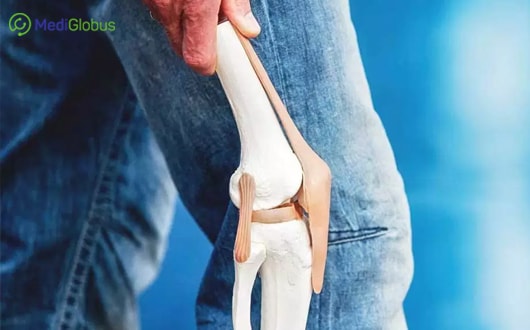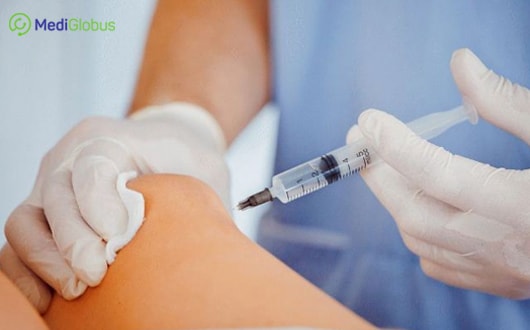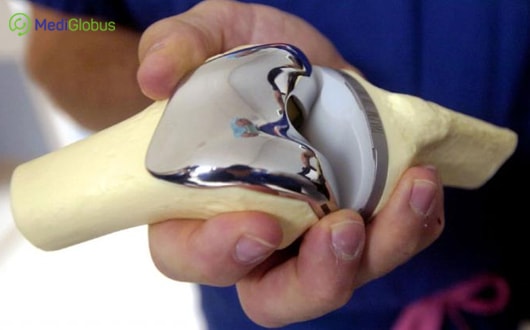Every year, hundreds and thousands of people go to doctors with complaints about pain and crunching sound while moving. This significantly reduces their life’s quality as their possibilities become limited due to such health problems. Joint diseases are a common pathology, which occurs due to variety of causes affecting patients of different age groups. According to statistics, 43% of the world’s population sooner or later will face diseases of the musculoskeletal system. In this article we will look at the options for the prevention and treatment of diseases of the joints.
READ IN ARTICLE:
WHICH INVESTIGATIONS ARE NEEDED?
WHERE IS A JOINT REPLACEMENT PERFORMED?
Inflammatory processes can occur in almost any age. The reason may be previously received injuries, the consequences of past infectious diseases, hypothermia, hormonal imbalance, etc. Practically all joints of a human body are prone to problems. The most commonly affected are major ones: hip, knee, elbow, shoulder and ankle.
Of these, the first three are leading in the number of diagnosed pathologies. Small joints (interphalangeal joints of the hand and metatarsal joints of the foot, temporomandibular joint) are affected to a lesser extent.

WHAT CHANGES OCCUR IN JOINTS?
Regardless of the reason for the development of joint damage, pathological processes in the initial stages are manifested by weakening of the ligamentous apparatus. In addition, the composition and amount of intra articular fluid changes. Further, in the absence of timely treatment for chronic inflammation or under the influence of other factors, the articular surfaces gradually wear off. Shape of the joint can be deformed and the joint gap decreases.

In this stage, patients complain of problems with mobility in the affected joint, severe pain, crunching during movement and stiffness. Sooner or later, bony structures are involved in the process, which causes the patient to experience unbearable pain and leads to complete restriction of movement.
In the early stages of the disease, it is possible to use conservative approaches in treatment. Specialists prescribe anti-inflammatory, analgesic and trophic drugs, chondro protectors (drugs that accelerate the regeneration of cartilage tissues), rehabilitation and physical therapy.
The goal of conservative therapy is to stop the active inflammatory process and slow the progression of the disease. Treatment can bring tangible or partial relief. It is quite difficult to completely stop the pathological process, especially when it comes to autoimmune processes. In some cases, such innovative techniques as the use of PRP therapy (injection of platelet-rich plasma into the knee) and stem cell therapy are effective.
Drug treatment is completely ineffective in the late stages of the disease (3rd-4th degree of arthrosis). Irreversible changes in the tissues are already pronounced and surgery is the only possible method of treatment. Operations are indicated for patients with advanced stages of arthritis and arthrosis, certain types of fractures (for example, a fracture or dislocation of the femoral neck), and oncological pathology.
READ ALSO: Successful knee joint replacement – patient’s story.
Traumatologist orthopedists use partial or full endoprosthetics (replacement of the affected joint with an artificial high-tech prosthesis). Today these operations are no longer considered something difficult or inaccessible. Foreign experts have gained a great deal of experience in prosthetics of various degrees of complexity, and surgical techniques have been modernized in order to minimize damage to the patient’s tissues. Every year more than 420,000 prosthetics are performed in foreign medical centers.
The rehabilitation period begins as early as 3 days after surgery, which allows the patient to move about 14 days later with minimal help from a cane stick. This type of prosthesis is available for the knee, hip, elbow, ankle and shoulder joints and is used most often.
Partial prosthetics (monopolar, single-lip prosthetics) are used in patients who have retained some of the cartilaginous articular surfaces, that is, not in the case of the latter stages of the disease. During the operation, the orthopedic doctor removes the damaged areas of the joint, replacing them with artificial implants.

The procedure is much simpler than total endoprosthesis, although it is used less frequently. This type of surgery is possible with interventions on the knee joint. After partial prosthetics of the joint, the patient does not need specialized rehabilitation. The indications for partial or full prosthetics should be determined solely by the orthopedic surgeon.
WHICH INVESTIGATIONS ARE NEEDED?
Usually, for a qualitative control of the function and condition of the joints, a digital X-ray or MRI scan is performed. These studies are usually enough to assess the state of the tissues and the purpose of treatment.
WHERE IS A JOINT REPLACEMENT PERFORMED?
Practically in every large multidisciplinary clinic abroad there is an orthopedic and traumatology department, where endoprosthetics are available. In addition to large medical centers, patients can choose narrowly specialized orthopedic hospitals. They offer full range of medical services to patients with diseases of the musculoskeletal system. According to ratings and statistics, the best areas for surgical interventions on the joints, including prosthetics, are recognized as:
- Czech Republic
Motol University Hospital in Prague. Here endoprosthetics of the knee and hip joints is performed. Operations are performed by Professor Tomáš Trč, medical expert of the Health Ministry of Czech Republic in the field of orthopedics and traumatology. Germany
The Rechts der Isar Clinic is one of the largest clinics in the Europe in Munich. Treatment is available on the basis of the Orthopedics and Traumatology Unit. Here they can conduct joint replacement in any degree of complexity.Poland
KCM Clinic Prosthetics is performed by renowned specialist, Professor of Orthopedics Christoph Cherkasov.Turkey
Liv Hospital (Istanbul) – Professor Chagatai Ozturk personally conducts the operations.
Hisar Intercontinental Hospital (Istanbul) is one of the oldest and largest medical institutions in Turkey. The hospital has a large endoprosthetics department, operations are performed using original implants supplied directly from well-known global manufacturers.





